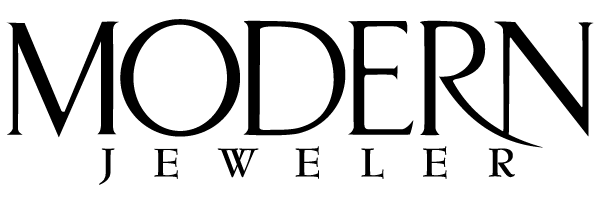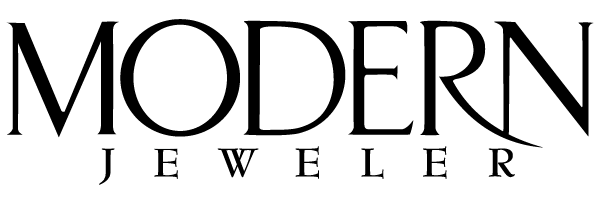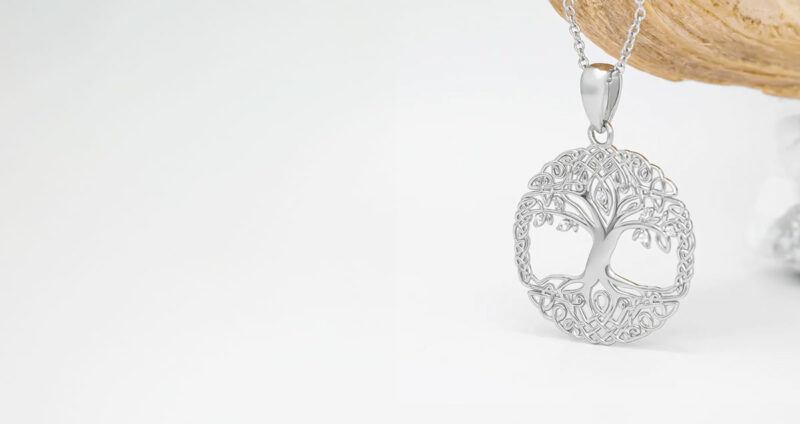Have you ever thought about how symbols connect us to our past, especially those that have endured through the ages?
The Tree of Life is one such symbol, deeply rooted in Celtic tradition and bridging the gap between the ancient and the modern. This emblem, rich with meaning and history, isn’t just found in old texts or carvings but is also a popular motif in today’s jewelry, symbolizing our link to ancestry and the natural world.
The Symbolism of the Celtic Tree of Life
The Celtic Tree of Life, or Crann Bethadh, symbolizes growth, rebirth, and interconnectedness. Its branches stretch upwards, its roots anchor deeply, and its trunk stands firmly in the now. Celtic Tree of Life jewelry represents more than just aesthetic beauty; it’s a tangible connection to cultural heritage, personal identity, and the continuity of life. In this blog post, we’re going to explore how Tree of Life jewelry goes beyond being simple ornaments. They are carriers of history, embodying the wisdom, strength, and connection to nature that our ancestors valued, effectively connecting the past with the present.

We’ll dive into the symbolism of the Tree of Life in Celtic culture, its impact on modern jewelry making, and its role in personal expression. Whether you’re a jewelry lover, someone with Celtic heritage, or just intrigued by enduring symbols, you’ll find out how the Tree of Life remains a powerful emblem of our bond with history, nature, and each other.
The Enduring Nature of the Tree of Life in Celtic Culture
The Tree of Life holds a special place in Celtic history, deeply embedded in the culture’s art, mythology, and spirituality. The Celts, known for their profound connection to the natural world and the land, considered trees as sacred beings, central to their existence. They served not only as living entities but as symbols of the cosmos’ structure, embodying strength, longevity, and renewal. This reverence is clearly reflected in the Celtic Tree of Life, which was more than a symbol; it was a representation of how the Celts viewed the universe—a connected entity where every life form has its place and purpose.
Druidic traditions, which formed the core of Celtic spiritual and daily life, emphasized the interconnectedness of all things. The druids believed that the Tree of Life was a conduit between the heavens, the earth, and the underworld, bridging different worlds and bringing harmony to the cosmos. This belief made the Tree of Life a central motif in Celtic art, carved into stone crosses and illustrated in illuminated manuscripts like the Book of Kells, showcasing its importance across centuries.
Archaeological findings across Europe have unearthed various artifacts adorned with the Tree of Life, from jewelry pieces like brooches and pendants to monumental stone carvings. These historical pieces serve as a testament to the enduring nature of the Tree of Life symbol in Celtic culture, illustrating its significance across different periods and regions.
In modern times, these ancient symbols have been seamlessly woven into contemporary jewelry designs, bridging millennia of tradition with today’s aesthetic sensibilities. Artisans draw inspiration from these historical motifs, creating pieces that resonate with the strength, resilience, and interconnectedness that the Tree of Life represents. This connection between past and present in jewelry design not only honors Celtic heritage but also makes these ancient symbols relevant to modern wearers, offering a piece of history that carries deep symbolic meaning and a touch of timeless beauty.
Modern Craftsmanship and Celtic Heritage
The craftsmanship behind Celtic Tree of Life jewelry is a blend of age-old tradition and contemporary innovation. Today’s artisans are weaving tradition with innovation, creating Tree of Life necklaces that symbolize continuity amidst change. These necklaces, emblematic of eternal growth and connection, are meticulously crafted to honor Celtic heritage while embracing contemporary design. This fusion ensures the Tree of Life’s enduring appeal, making it a cherished piece for those seeking jewelry with deep-rooted significance and modern elegance
One key aspect of this craftsmanship is the adaptation to modern tastes and technologies. While traditional methods are still revered, many artisans have embraced new tools and techniques to enhance precision and detail in their work. For example, laser cutting allows for intricate designs that would be difficult to achieve by hand, and computer-aided design (CAD) software helps in visualizing complex patterns before they are crafted. Despite these technological advancements, the essence of the Tree of Life symbol—a connection to nature and ancestral roots—remains at the heart of each piece.
Ethical Practices in Jewelry Making
Ethical sourcing of materials has become increasingly important in the realm of contemporary Celtic jewelry making. Aware of the environmental and social impacts of mining metals and gemstones, artisans are turning to sources that prioritize sustainability and ethical labor practices. This shift is not only about reducing harm but also about aligning the creation of Tree of Life jewelry with the symbol’s inherent message of harmony and balance. Many jewelers now use recycled metals and ethically sourced gemstones to minimize their ecological footprint, ensuring that the beauty of their creations does not come at the expense of the planet or its people.
This commitment to sustainability and ethical practices in jewelry making not only reflects the values of modern consumers but also honors the Celtic tradition of living in harmony with the natural world. As these artisans blend traditional craftsmanship with ethical considerations, they ensure that the Tree of Life jewelry continues to be a meaningful symbol for those who wear it, connecting them not only to their ancestors but also to a more sustainable and equitable future.
Beyond Ornamentation
The Tree of Life symbol transcends mere artistic expression, embedding itself deeply within the psyche of those it touches. Its representation of interconnectedness, growth, and resilience resonates on a psychological level, influencing individual identity, community bonds, and overall mental well-being. For many, wearing Tree of Life jewelry serves as a personal talisman, a reminder of their strength, their journey, and their connection to the larger web of life. This symbol helps individuals anchor their sense of self within the continuum of past, present, and future, fostering a deeper understanding of their place in the world.
In communities, the Tree of Life acts as a unifying symbol, representing shared values and collective identity. Its roots in Celtic culture, in particular, offer a touchstone for those of Celtic descent, serving as a visual expression of pride in one’s heritage. However, its appeal is not limited to those with Celtic roots; the universal themes it embodies allow it to resonate across diverse cultures and belief systems. The Tree of Life’s symbolism of unity and interconnectedness makes it an ideal emblem for modern ceremonies, including weddings, graduations, and memorials, where it symbolizes the interconnected nature of human relationships and the cycle of life.
The Tree of Life in Modern Ceremonies
The role of Celtic Tree of Life jewelry in these ceremonies is not merely decorative. It serves to imbue the occasion with deeper meaning, connecting the personal milestones being celebrated to the timeless rhythms of the natural world. For instance, in a wedding, Tree of Life rings or pendants can symbolize the couple’s hopes for growth, resilience, and enduring love, rooted in mutual respect and understanding. Similarly, in memorial services, they can represent the continuation of the loved one’s spirit within the great tapestry of life.
Moreover, the incorporation of the Tree of Life in modern cultural practices speaks to a broader yearning for connection and meaning in an increasingly fragmented world. It serves as a tangible link to traditions that honor the earth and our interconnectedness with all living things, encouraging a sense of responsibility towards the environment and each other. This deep, symbolic significance, coupled with the ethical and sustainable practices in contemporary Celtic jewelry making, makes the Tree of Life an emblem not just of personal or communal identity but of a shared commitment to a healthier, more harmonious world.






